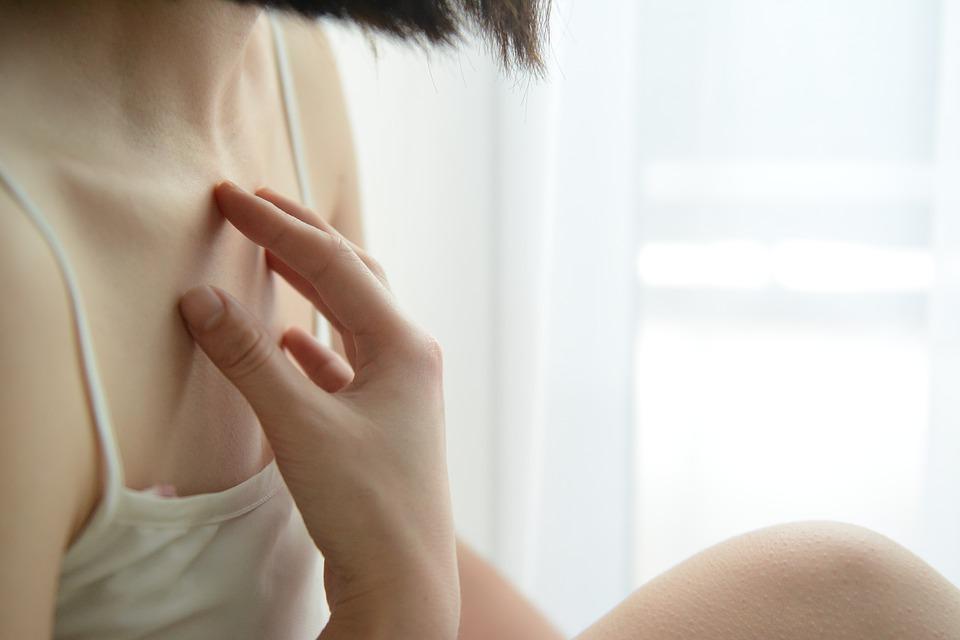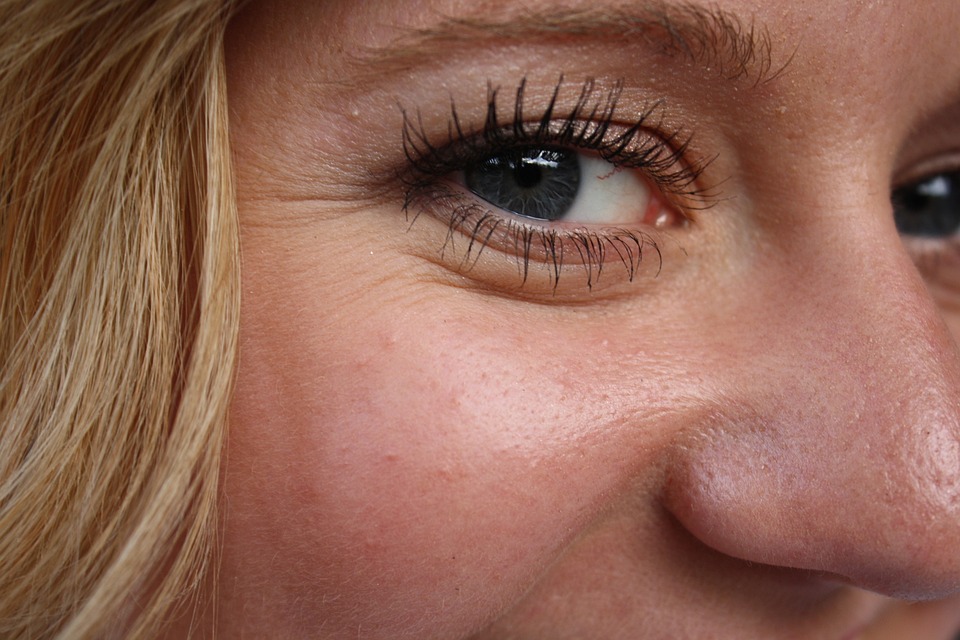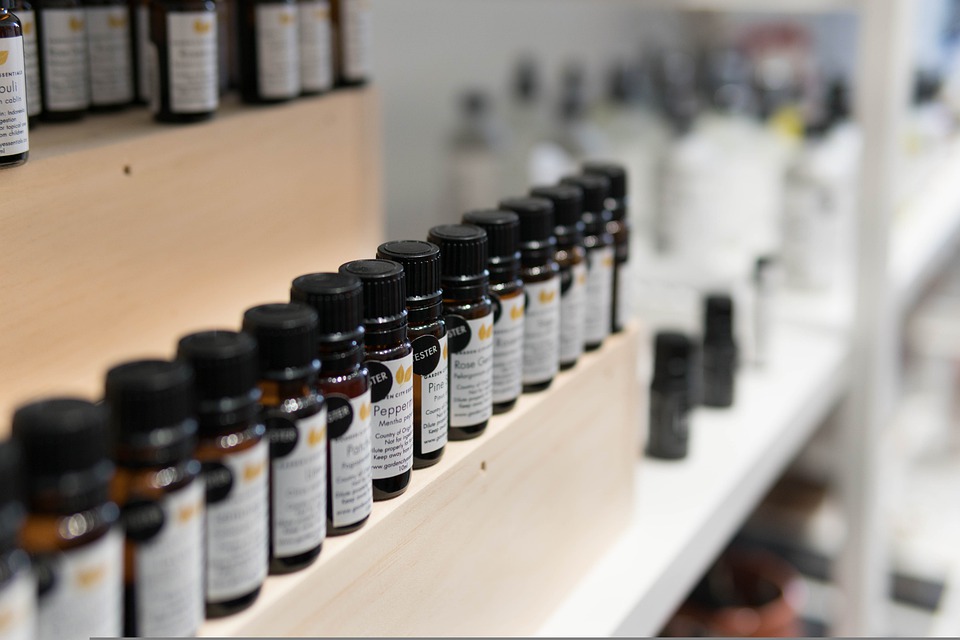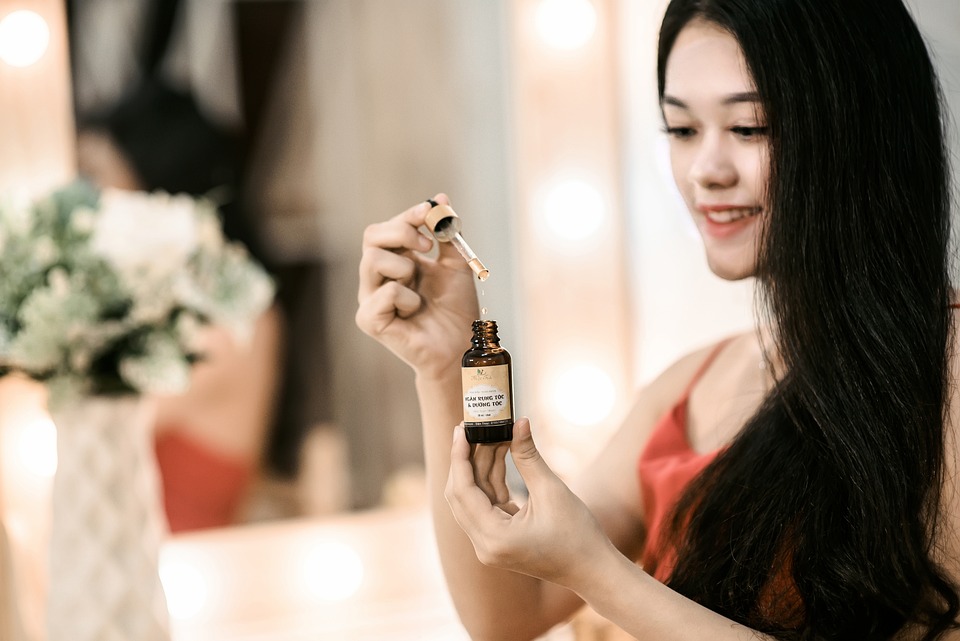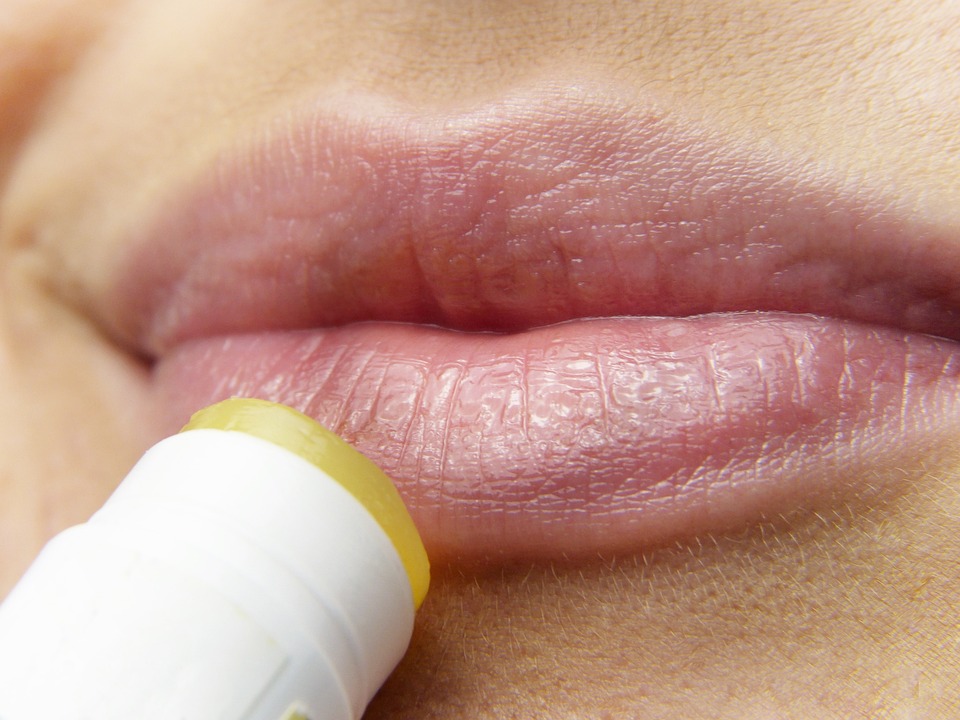
“If the eyes are said to be a window into the soul, it is important to take care of the skin around them.” The skin around your eyes is thinner and more sensitive than most other areas of your body. The skin around your eyes is incredibly thin and delicate Skin around the eyes is very thin and sensitive, and is usually one of the first places to show signs of aging, such as fine lines.
Why? Eye-area skin is more prone to dryness, droopiness, lines, and wrinkles because it doesn’t have as many oil glands and collagen as the rest of your face and body. A study found that skin with fewer sebaceous glands is more likely to wrinkle, which is why crow’s-feet is such a big problem.
Characteristics of Healthy, Youthful Eyes
The skin around youthful eyes is tight, agile, smooth, and healthy-colored. This type of skin snaps back quickly when you pinch it. The fat pads under the eyes help to reduce the appearance of any bags, dark circles, or loose skin. The skin around the eyes changes over time, and your age begins to show.
Why the Skin Around Your Eyes Is the First Place That Shows Age
Lines and wrinkles under the eyes are common signs of aging. The skin around your eyes is thin and delicate compared to other areas of the face, which is why it’s one of the first facial areas to show signs of aging. This region is where people express themselves through their faces. Your eyes show every emotion you have. For example, if you laugh, cry, or get angry, the skin around your eyes also changes.
In your twenties, your skin is firm and elastic, able to quickly recover from repeated expressions and movements. As you age, wrinkles form around your eyes from repeated movements. We recommend that you have a skincare routine that includes care for your eye skin. Your eye skin will show signs of aging unless it is treated and cared for.
As you learn more about the things that can cause your eye skin to age, you can take steps to prevent or delay those effects. We will look at some of the reasons for wrinkles around the eyes and some ways to improve the skin tone in that area. These include natural skin-tightening methods, lifestyle changes, surgery, and other skincare solutions.
The Causes of Eye Skin Aging
Time
The skin around the eyes gets saggy and less elastic over time as the collagen and elastin fibers that help keep it tight and firm start to break down. The result is sagging, loose skin. The process of getting wrinkles typically begins in a person’s 30s. The aging process can be accelerated by things like daily facial expressions, sun exposure, pollution, poor diet, lack of sleep, and stress. Basically, anything that’s unhealthy can make you age faster.
Estrogen Decline
A woman is more likely to have skin that ages when she experiences menopause and her estrogen levels, go down. The International Journal of Women’s Dermatology reports that estrogen aids in keeping your skin hydrated. Once estrogen is depleted, the skin becomes less elastic and more susceptible to dehydration, wrinkles, and atrophy. It’s also slower to heal from wounds.
Ethnicity and Genetics
You are predisposed to a certain skin type and susceptibility to wrinkles around your eyes based on your genes. Some people are genetically predisposed to have skin that ages more quickly. This evidence suggests that certain ethnicities age at a slower rate due to their high melanin content which protects them better from sun exposure.
Environmental Exposure
Your skin protects your body from the environment, so it goes through a lot of stress. According to Frontiers in Pharmacology, environmental factors like solar radiation, smoke, and air pollution can cause aging, as well as some cosmetic products.
Smoking and Other Unhealthy Lifestyle Habits
According to research by the Mayo Clinic, nicotine and other harmful chemicals found in cigarettes can contribute to premature aging and wrinkles. Your skin cells need oxygenated blood to function properly, and when blood vessels narrow, it reduces the amount of oxygenated blood that can reach them. This can cause your skin to become dry, flaky, and irritated.
If that’s not enough, Nutrients, a scientific journal reviewed by experts, reports that high-fat diets can also cause oxidative stress. This leads to inflammation and causes the skin to age more rapidly. Stress creates changes in the proteins found in skin cells, which decreases the skin’s elasticity. If you have unhealthy habits, you can still make changes.
3 Do’s and Don’ts for Tending to the Skin Around Your Eyes
1. Do Commit to Treating Your Eye Skin
Michele Green, a board-certified dermatologist in New York City, says that people often forget about eye creams and don’t use them. The moisturizer you use needs to be able to penetrate the skin to deliver hydration.
2. Don’t Rely on Your Regular Facial Moisturizer to Get the Job Done
Many patients ask Dr. Fine if they can just use their regular moisturizer on their eyes, and most of the time the answer is no, she says. Many moisturizers are not safe to use on the delicate skin around the eyes, and can actually cause irritation. Fine recommends using an eye cream that is specifically designed for eyelid skin. Face serums and moisturizers that contain active ingredients, such as retinoids, may be too strong a concentration for under-eye skin.
3. Do Opt for Actives When Choosing an Eye Cream
Just because it’s a delicate area doesn’t mean you can’t have a flavorful moisturizer. Dr. Green suggests looking for an eye cream that contains retinol, which is a vitamin A derivative. An eye cream that contains retinol will be designed specifically for use around the delicate eye area, and will be different from a typical facial cream that contains retinol. The formulation will have a lower concentration of retinol to reduce the risk of irritation, and it will be more emollient (moisturizing) to improve hydration while also reducing the risk of irritation.
How to Prevent Under-Eye Wrinkles
Keep Your Skin Clean
You should clean the skin around your eyes at least once a day using a gentle cleanser. Make sure to remove your makeup before bedtime to cleanse your skin of toxins, impurities, and free radicals. This will keep your skin looking healthy and vibrant.
Protect Your Eyes From the Sun and Environmental Toxins
Some manufacturers are developing sunscreen formulations that not only protect against skin damage caused by UVA/UVB exposure but also free-radical damage from environmental exposures.
The Skin Cancer Foundation recommends using mineral sunscreen formulas for delicate and sensitive eye areas instead of sunscreens that many people apply around the eyes and even on the eyelid region. Mineral sunscreens contain zinc or titanium dioxide. This type of sunscreen is good for people who sweat or are active, as it doesn’t drip as much. There are also sunscreens designed to protect the area around your eyes.
You can also wear sunglasses and hats to reduce the amount of ultraviolet exposure to the skin around your eyes, including exposure to UVA and UVB rays.
Moisturize and Drink Water
Keeping the skin hydrated around the eyes is important as it is thinner and more susceptible to fine lines and wrinkles when it is dry. If you have young and tight skin, you may only need to use a light moisturizer. However, as you get older (in your 40s and 50s), you may need to use a richer and thicker moisturizer. You should also drink eight to 10 glasses of water per day to keep your skin healthy.
Try Natural Remedies
There are a few home remedies that can help with keeping your skin healthy and get rid of under-eye bags. These are a few we’ve found to be effective:
- Hold a cool compress on your eyes while sitting upright.
- Get 7 to 9 hours of quality sleep each night so your skin can rejuvenate.
- Prop up your head to prevent fluid from settling around your eyes.
- Prevent or treat known allergies that cause under-eye bags.
- Quit smoking to protect the already thin and delicate under-eye skin.
- Limit dietary salt to prevent fluid retention under the eyes and elsewhere.
- Drink tea or apply it to the skin — especially green tea, which has anti-skin-aging properties and caffeine thought to benefit the skin.
- Apply shea butter, coconut oil, palm kernel oil, palm oil, soy oil, baobab oil, or python oil, which can all help promote a healthy skin barrier.
Be wary of “natural” remedies that claim to be effective but have little scientific evidence to back up their claims. Some can cause skin irritation and even eye infections.
Be Careful With Makeup
To effectively hide under-eye bags, address the root of the problem and take care of the skin, rather than just trying to cover the area with makeup. Applying makeup to dirty skin or using old products can intensify the problem of under-eye wrinkles and bags.
What the experts say: Dermatologists recommend replacing your foundation, eyeliner, and concealer every year, your mascara every six months, and your eyeshadow every two years. If you use makeup after it expires, you’re more likely to get styes and infections because bacteria builds up from using it over and over. It’s important to be cautious when using cosmetics around your eyes. To avoid bacteria and impurities, never share eye makeup and make sure the skin around your eyes is clean before applying makeup. Remove makeup before going to sleep at night.
Invest in the Right Skin Care Ingredients
Retinoids, such as tretinoin or retinol, are an important ingredient in anti-aging skin care. If you’re looking for a way to reduce wrinkles and enhance skin firmness and elasticity around your eyes, researchers say that topical retinoids may be your best bet. Retinoids can irritate the skin, especially around the eyes. Those using retinol should avoid direct sun exposure. Thankfully, there are other options.
- Defensins offer comparable anti-aging results without irritation.
- Topical antioxidants such as vitamin C have also proven to be important ingredients in topical skin care. Among other benefits, vitamin C can improve collagen production.
- Hyaluronic acid, found in many dermal fillers, is another ingredient commonly found in skin care products. It helps to hydrate and plump lackluster skin.
- Topical estrogens may help revive estrogen-deficient skin, a symptom of menopause.
- Niacinamide is one of the most sought-after ingredients in skin care today. The vitamin B derivative can help strengthen and firm the skin’s barrier.
Be aware that the FDA does not have the same level of regulation over skin care products as it does for drugs and devices. When choosing products, carefully consider the ingredients involved.
Dermatologic Procedures for Addressing Eye Concerns
Sometimes, an over-the-counter solution just won’t do the trick. Some solutions that are more powerful are available from your dermatologist. Here are some procedures and treatments to ask about.
For Under-Eye Darkness, Hyaluronic Acid Fillers Can Help
Injecting a small amount of hyaluronic acid can fill in the groove near the tear trough, which is common among many people. This procedure should be done by a skilled provider because the skin in this area is very thin, as research has shown. According to Fine, people in their twenties and thirties who have dark circles under their eyes respond well to this treatment. This space can be filled in to change the way light reflects off the area, making eyes look lighter and brighter. According to the speaker, topical anesthetics produce minimal pain, and the injections last 9 to 12 months.
A different approach may be necessary for people in their forties and fifties, she says. Fine says that there are often bony changes and slipping of deep fat pads due to a loss of fat and collagen. If you look in the mirror, you will notice very noticeable bags under your eyes. Filler will not be able to fix this problem. The doctor says that fillers in the mid and lateral cheek can improve the overall appearance.
While there are a number of over-the-counter treatments like creams, serums, and treatments that can help to temporarily fix the problem, for some people, surgery may be the only way to achieve long-lasting results. There are a number of over-the-counter treatments that can help with undereye puffiness or bulges, but for some people, surgery may be the only way to get long-lasting results.
As people age, they lose collagen which can cause the fat pad around their eyes to slip and create a bulge, commonly known as bags around the eyes. Although a filler can be helpful in some instances, surgery is generally a more reliable method of resolution. Blepharoplasty, or eyelid surgery, can be used to address bags under the eyes, wrinkles, and puffiness, according to the American Society of Plastic Surgeons (ASPS). The surgery can be performed on the upper and lower eyelids or just one of them. In 2019, there were more than 211,000 eyelid surgeries performed in the United States, with the average procedure costing $3,300, according to the American Society of Plastic Surgeons. The most important thing for recovery is minimizing swelling and bruising, which can last up to two weeks.
For Fine Lines or Dark Circles, Try a Laser Treatment
In her office, Green treats patients with eMatrix Laser Skin Resurfacing to stimulate collagen growth, which results in firmer, more youthful-looking skin. This laser uses radiofrequency to treat the skin, with a tip that is specifically suited for the eye area in order to target fine lines and dark circles. The article published in Clinical, Cosmetic, and Investigational Dermatology in 2014 states that radiofrequency uses electromagnetic energy to heat up skin tissue, causing collagen production. Other options include Thermage and Fraxel Resurfacing Treatment.
Green says that these have to be done every four to six weeks and that they require commitment.

